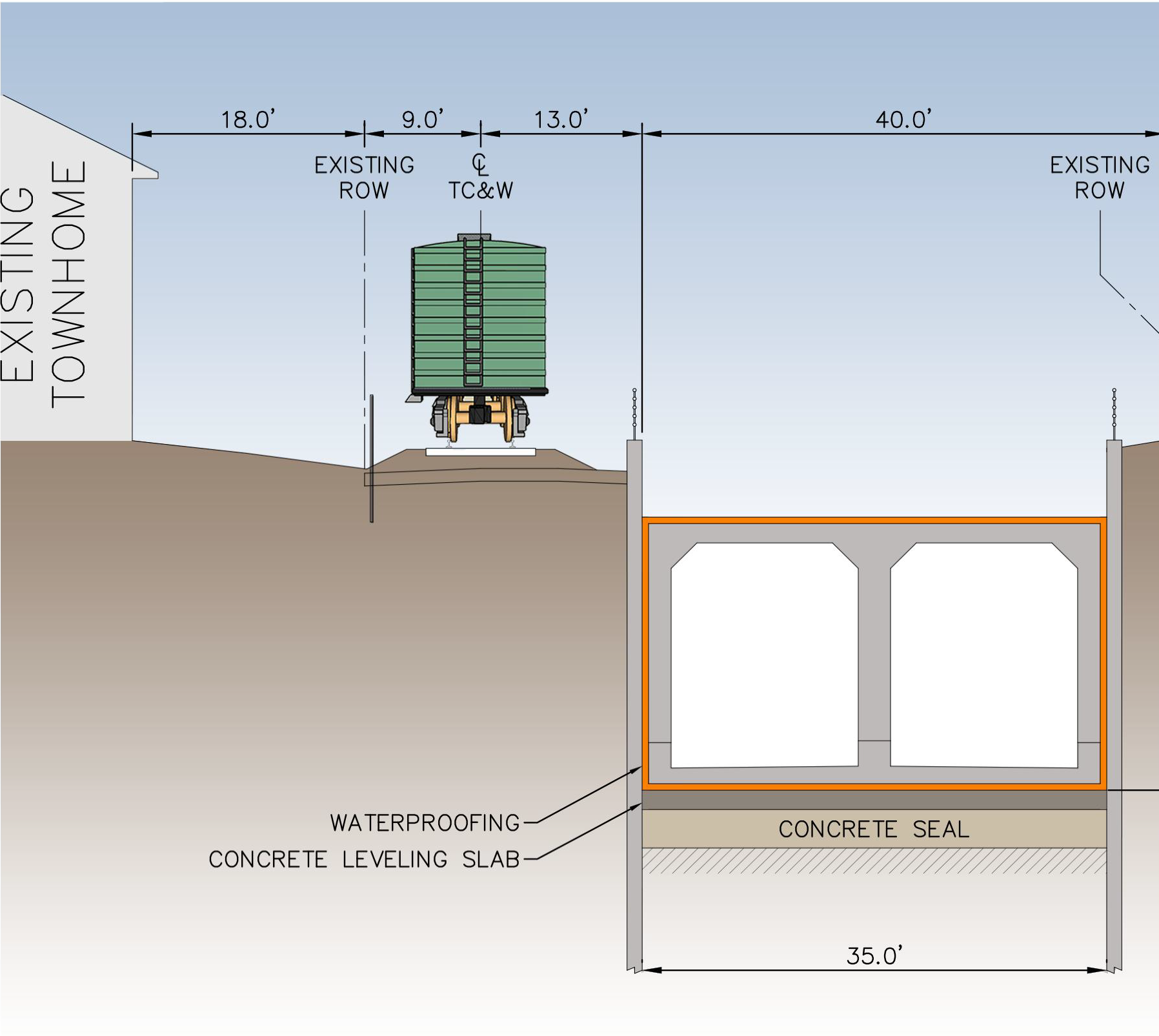Phase 1: Sheet Pile Installation
Install approximately 1,300 pair of sheet piles to create 100-foot-long rectangular shaped cells which will contain groundwater. A hydraulic press-in-piler will be used to minimize noise and vibration during sheet pile installation.
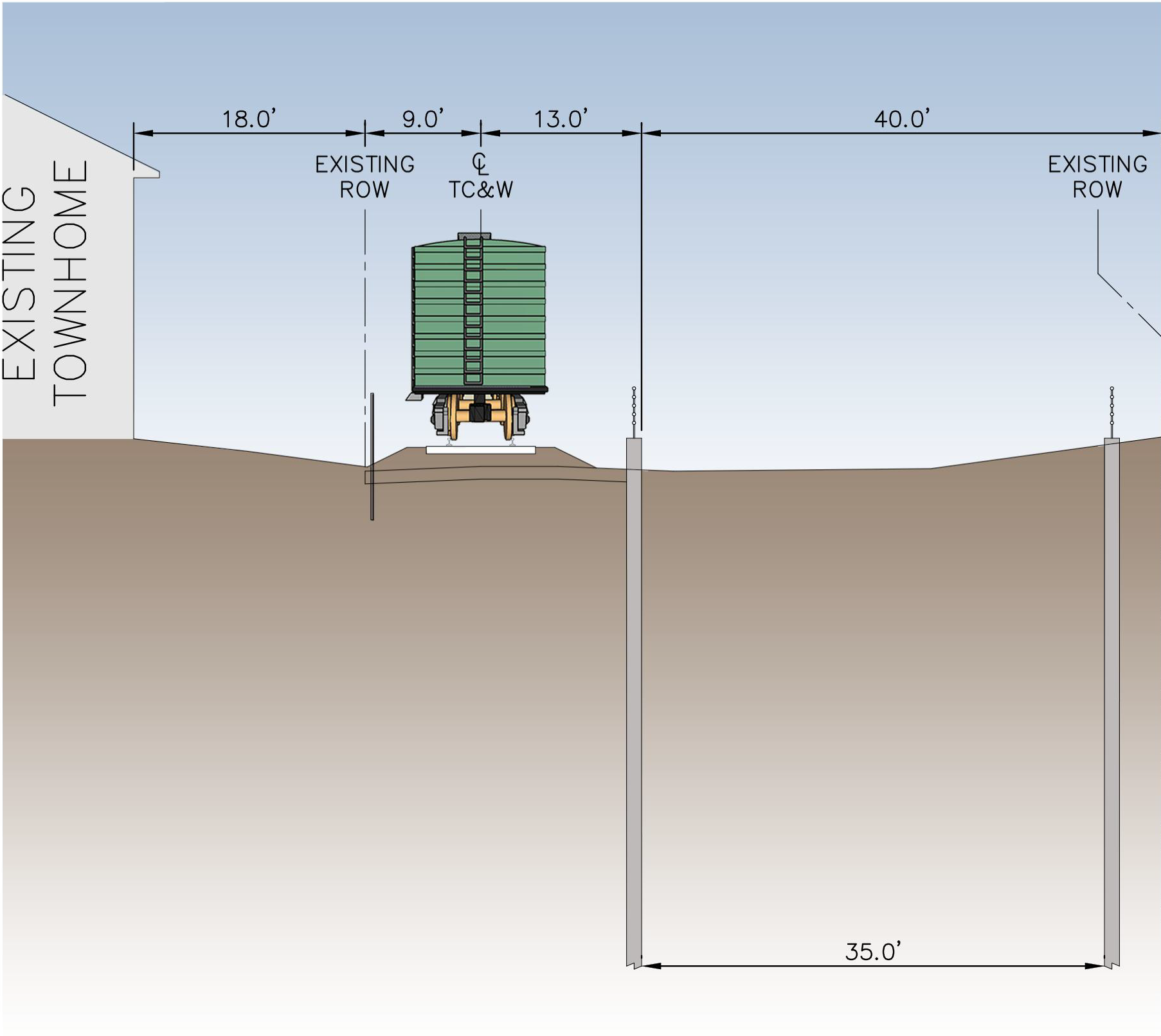
Phase 2: Excavation and Bracing
Excavate soil for the tunnel using equipment such as excavators and clamshell excavators. Expect a steady flow of trucks in the area to move soil off the construction site. Bracing will be installed between the sheet pile walls as the excavation extends to the bottom of the tunnel.
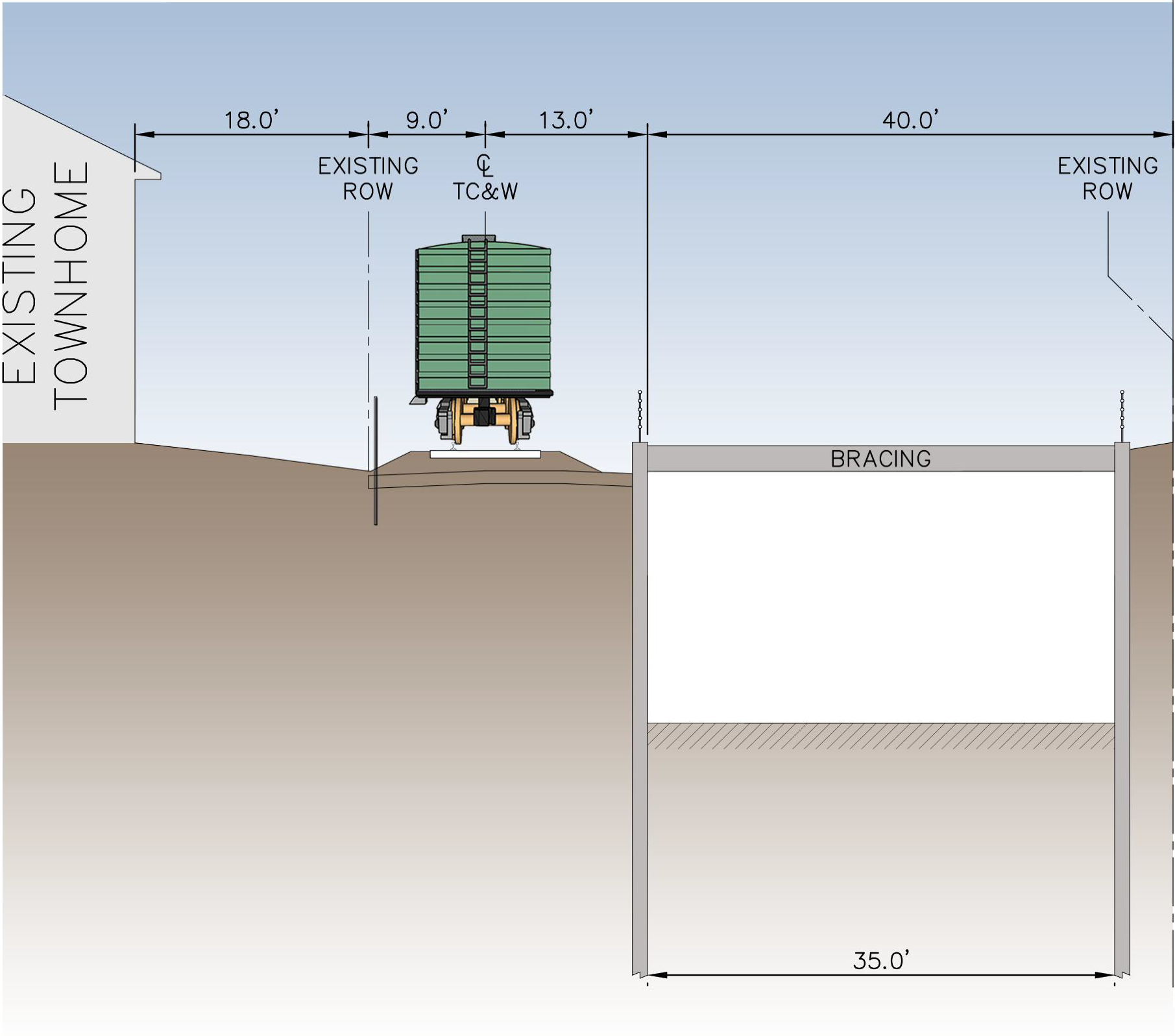
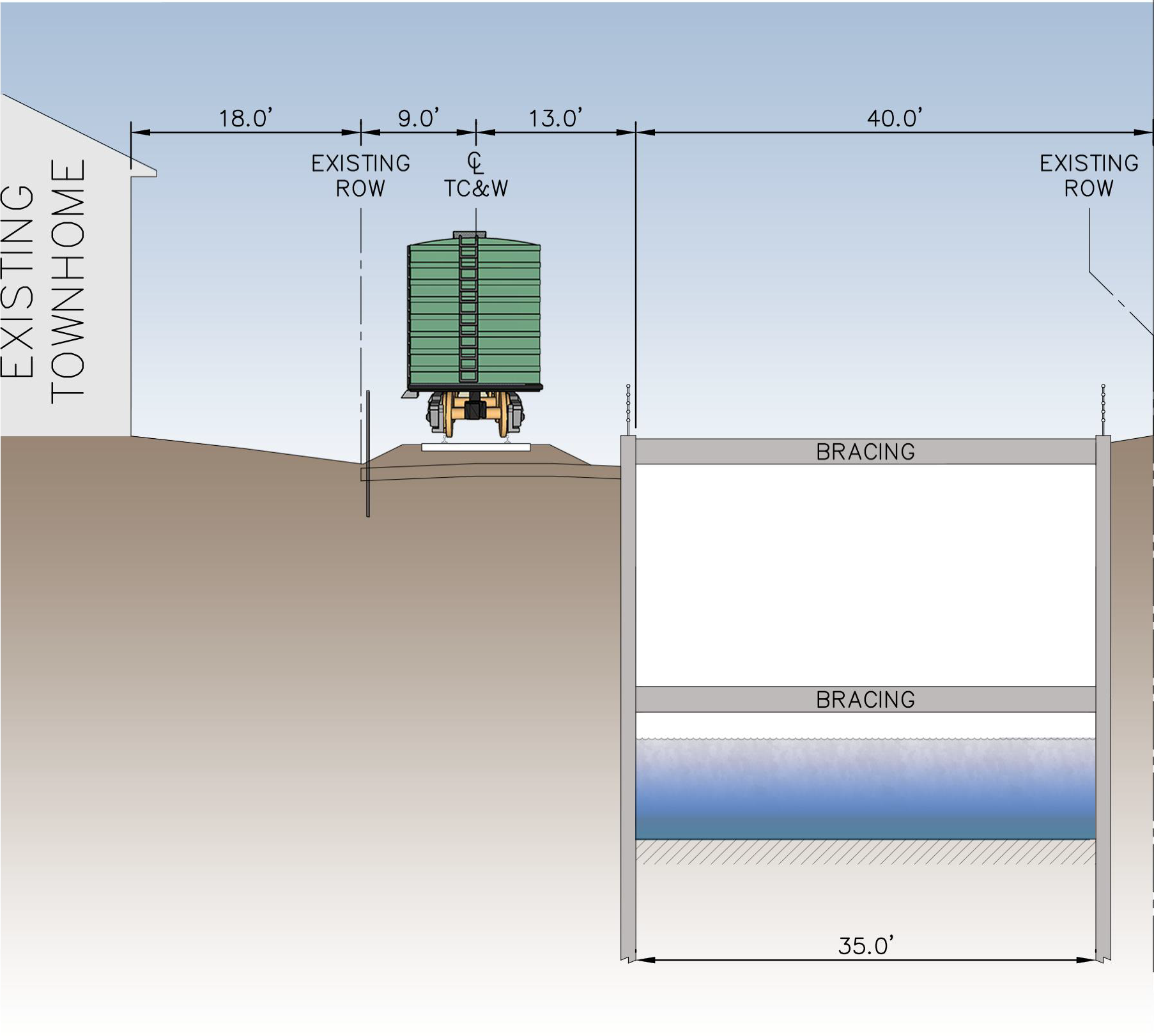
Phase 3: Concrete Seal Installation and Water Removal
Place concrete into the excavation with a pump truck to create a seal on the bottom of the tunnel. After the concrete has cured, the cell will be watertight. Pumps will then move water from the cell under construction.
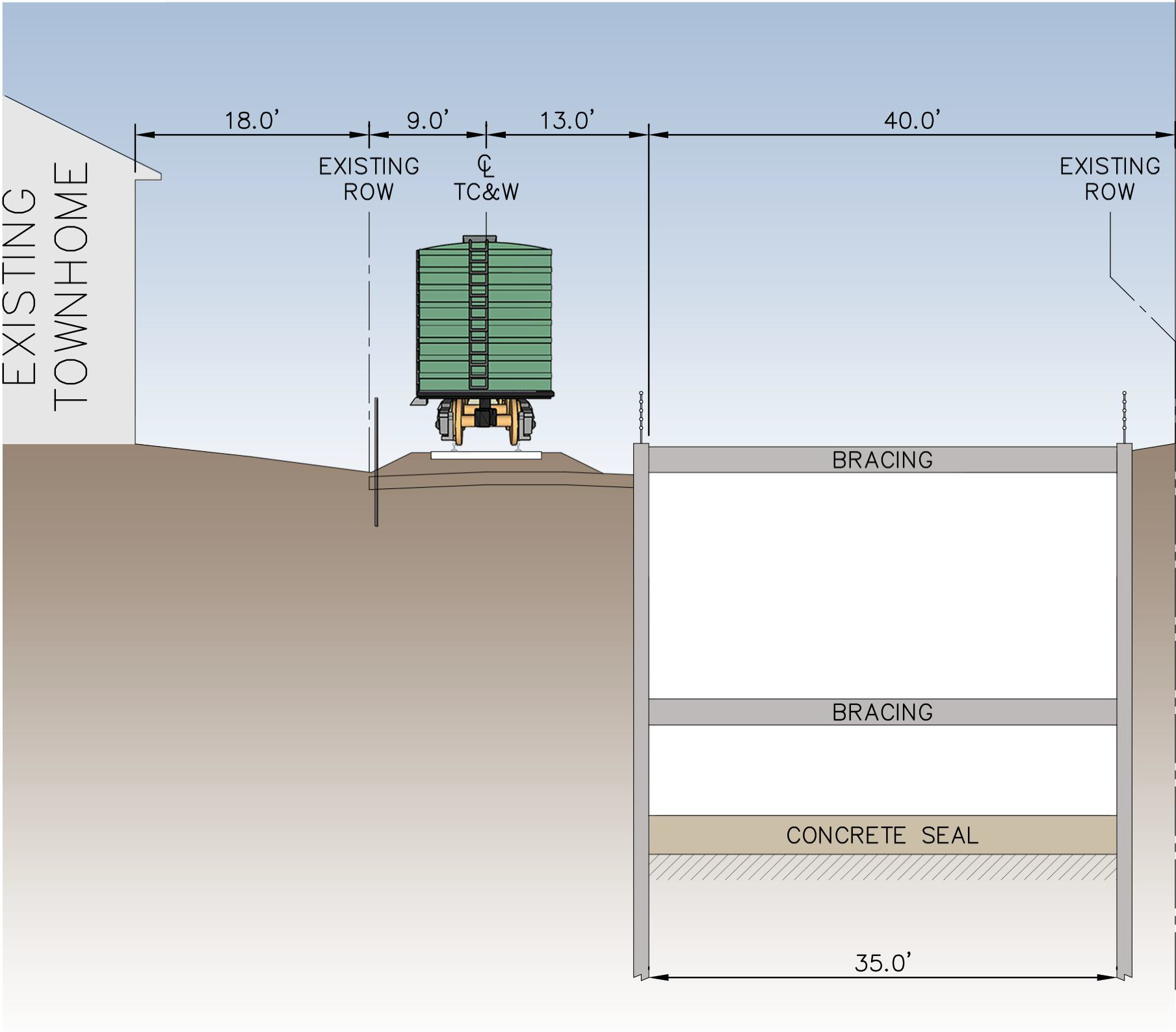
Phase 4: Bottom Formwork & Waterproofing
Install formwork for the base of the tunnel, place concrete using pump trucks and install waterproofing over the concrete after it has cured.
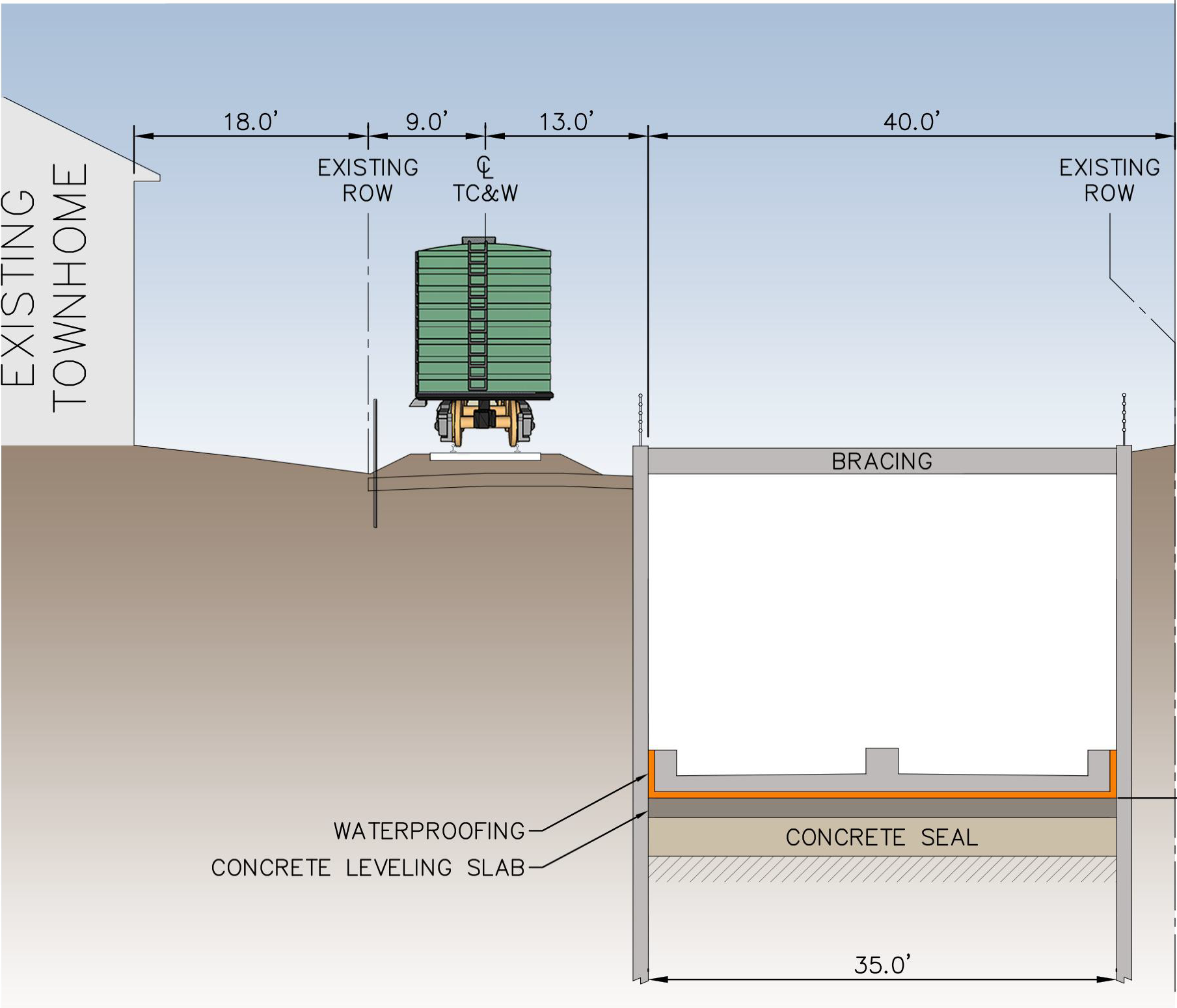
Phase 5: Walls & Top Formwork
Install formwork for the tunnel walls, place concrete using pump trucks and install waterproofing over the cured concrete. Similar activities will be repeated to construct the top slab. Once the top slab is complete the contractor will backfill over the tunnel and will construct the bike trail and landscaping.
